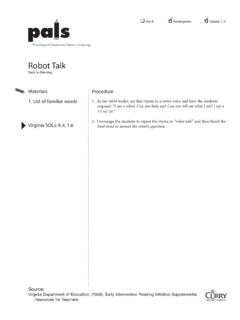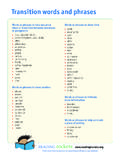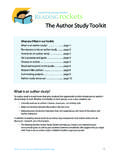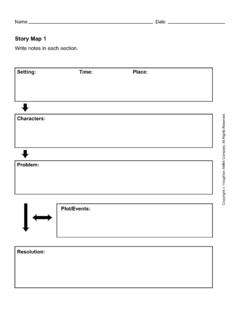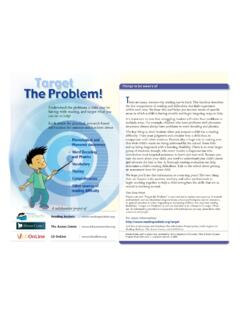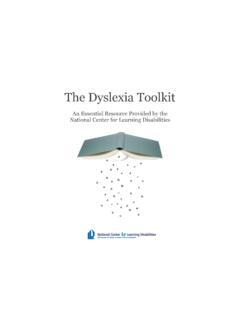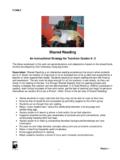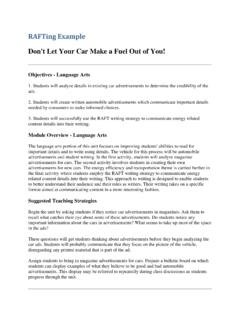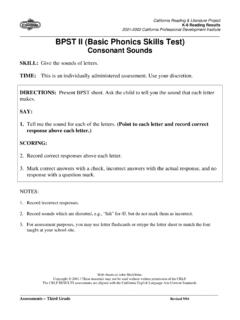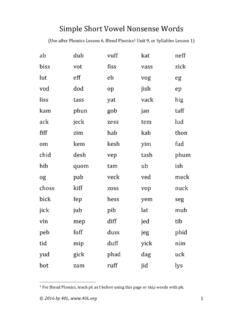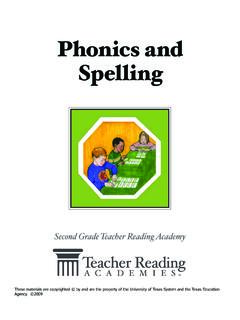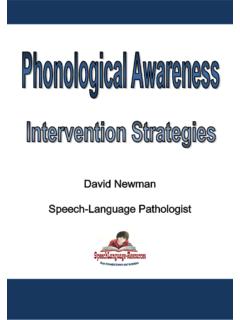Transcription of Sample Phonics Scope and Sequence - Reading Rockets
1 Adapted from Fairleigh Dickenson Center for Dyslexia Studies 07/19/2019 1 Sample Phonics Scope and Sequence Adapted from Fairleigh Dickenson Center for Dyslexia Studies 07/19/2019 2 This document has been adapted from The Fairleigh Dickenson Center for Dyslexia Studies Scope and Sequence and What is a Scope and Sequence ?
2 A Scope and Sequence is the backbone of instruction. It guides lessons based on a logical skill Sequence , builds on previously learned skills, and allows for the evaluation of gaps and redundancies across grade levels. For Reading instruction, it is an essential roadmap that should establish clear, research-based, grade-level skill instruction in the essential components of Reading : phonemic awareness, Phonics , vocabulary, fluency and comprehension, as well as spelling. For K-3 Reading instruction, a focus on foundational Reading skills must be paramount.
3 Without explicit, systematic, comprehensive and cumulative instruction in the areas of phonological awareness, phonemic awareness, and Phonics , many students do not acquire the basic knowledge of the structure of the English language, nor have the meta cognitive strategies needed to unlock (decode) unknown words. For this reason, it is essential that a Scope and Sequence identifies the skills that will be taught to establish that foundation for students in kindergarten through grade 3. How Can this Scope and Sequence be Used?
4 Effective core Reading instruction uses a comprehensive Reading Scope and Sequence to guide instruction across a school year and up through the grade levels. Of critical importance, core Reading instruction must include a way of identifying those students for which additional, targeted, skill-focused instruction must be provided. These are students who may have scored below benchmark on universal screenings and/or are not keeping pace with grade-level Reading expectations and require additional skill-based small group or individualized instruction in Phonics and word analysis.
5 For those students that have not kept pace with grade level expectations, the most effective way to build a foundation in Reading is to directly teach Phonics , first, by administering an inventory to determine which Phonics skills the student does and does not know, and then, providing direct, systematic, and sequential instruction to teach these skills. This Scope and Sequence is one that can be used to guide that instruction for small groups of students with similar skill needs, or individual students. How to Navigate this Chart Each column is sequenced in a presumed order of difficulty.
6 Because each student, or the needs of different small groups differ, it is best to seek to optimize their learning experience by individualizing instruction. Students do not learn in a straight uphill line without bumps along the way. When hitting these bumps or plateaus, students often require time to internalize their new learning. By selecting appropriate new learning material from a different column we allow students to hold onto what they still need to internalize while moving them forward with a different skill.
7 Guidelines for When to Change Columns We move children most quickly to decoding mastery by targeting new learning from the phonogram column. If a student (based on oral Reading , automaticity rate, error monitoring) appears to need more time to hold onto a particular learning, then the teacher chooses from one of the other columns. For example: A small group (or individual student) has learned all of the short vowels and Adapted from Fairleigh Dickenson Center for Dyslexia Studies 07/19/2019 3 initial blends, understands the concept of closed syllable , but needs more time to internalize short vowels as well as blends.
8 Consider what instructional path to choose next using these guidelines: Choices should permit most words for Reading and spelling Should address Sequence of difficulty Should not be confusable with recently taught skills Should include vowel patterns (for practice) whenever possible. Choose from this order of priority: Phonemes Syllabication/ syllable Types Affixes Spelling Generalizations Phonemic Awareness and Phonics Teaching sound/letter correspondence of all the English phonograms to mastery is a critical component of Reading proficiency.
9 For this reason, it is the most important column on the Scope and Sequence , with mastery of short vowels being the most important skill. Short Vowels there is a preferred order in which to teach short vowel sounds, to separate short vowel sounds that students often confuse, , /i/ and /e/. When teaching short vowels, do not introduce them too close together. Order of teaching short vowels (with key words): a apple i itchy o octopus e elephant u up Short vowels must be learned to mastery of Reading , , 90% correct in isolation, in controlled lists of single words, in nonsense words (accuracy in connected text dependent on other factors).
10 Short vowels must be learned to mastery for spelling, , 80%-90% mastery in isolation and in spelling single words. Therefore, it is necessary that instruction includes repeated exposure to and practice in Reading and spelling taught short vowel words (through word lists, controlled text, dictation exercises) before introducing a new short vowel. Adapted from Fairleigh Dickenson Center for Dyslexia Studies 07/19/2019 4 While waiting to teach the next short Complete teaching not yet learned consonants: o Teach no more than one each lesson o Teach to mastery o Do not teach confusing consonants close together, , m and n.
